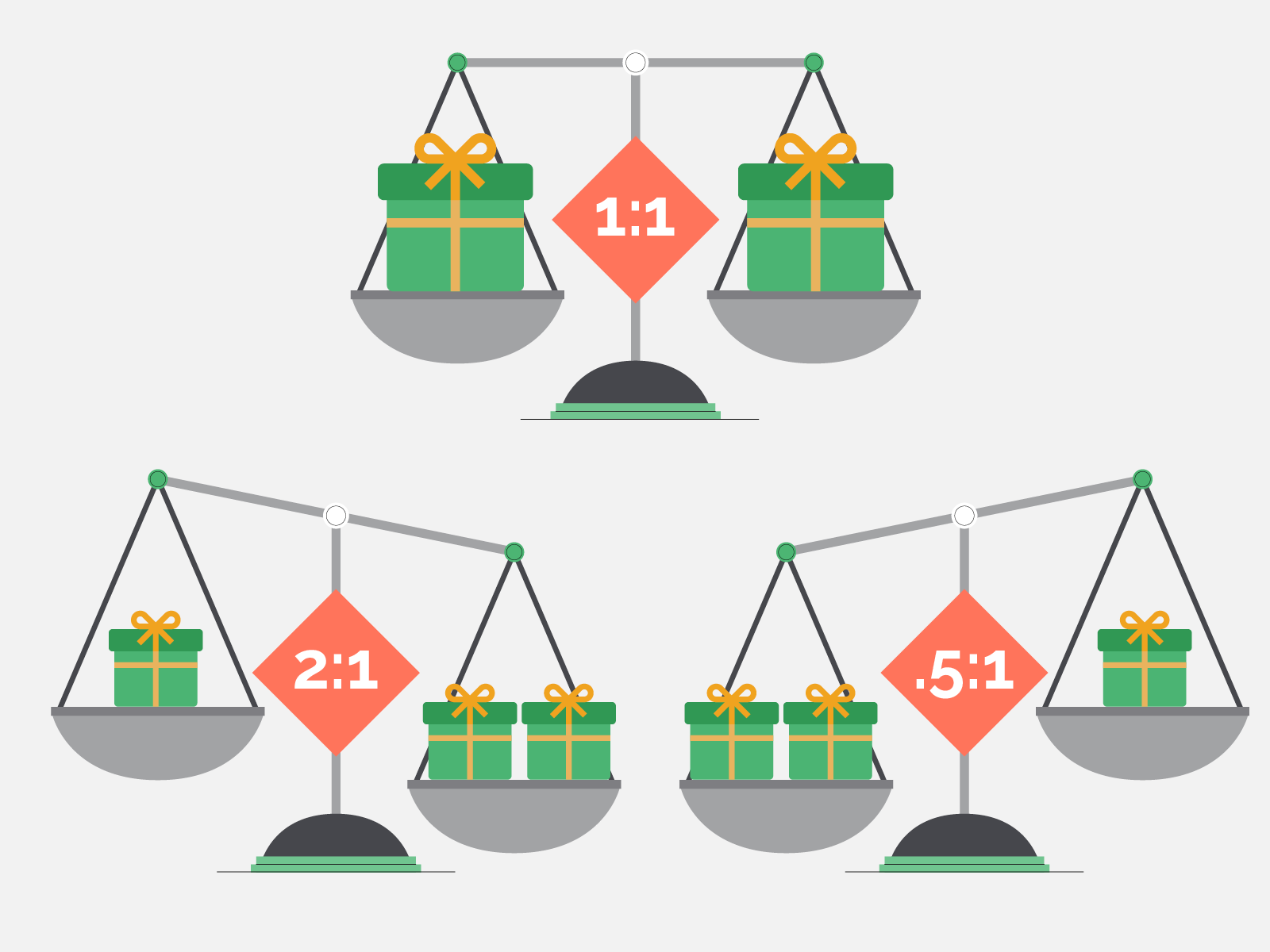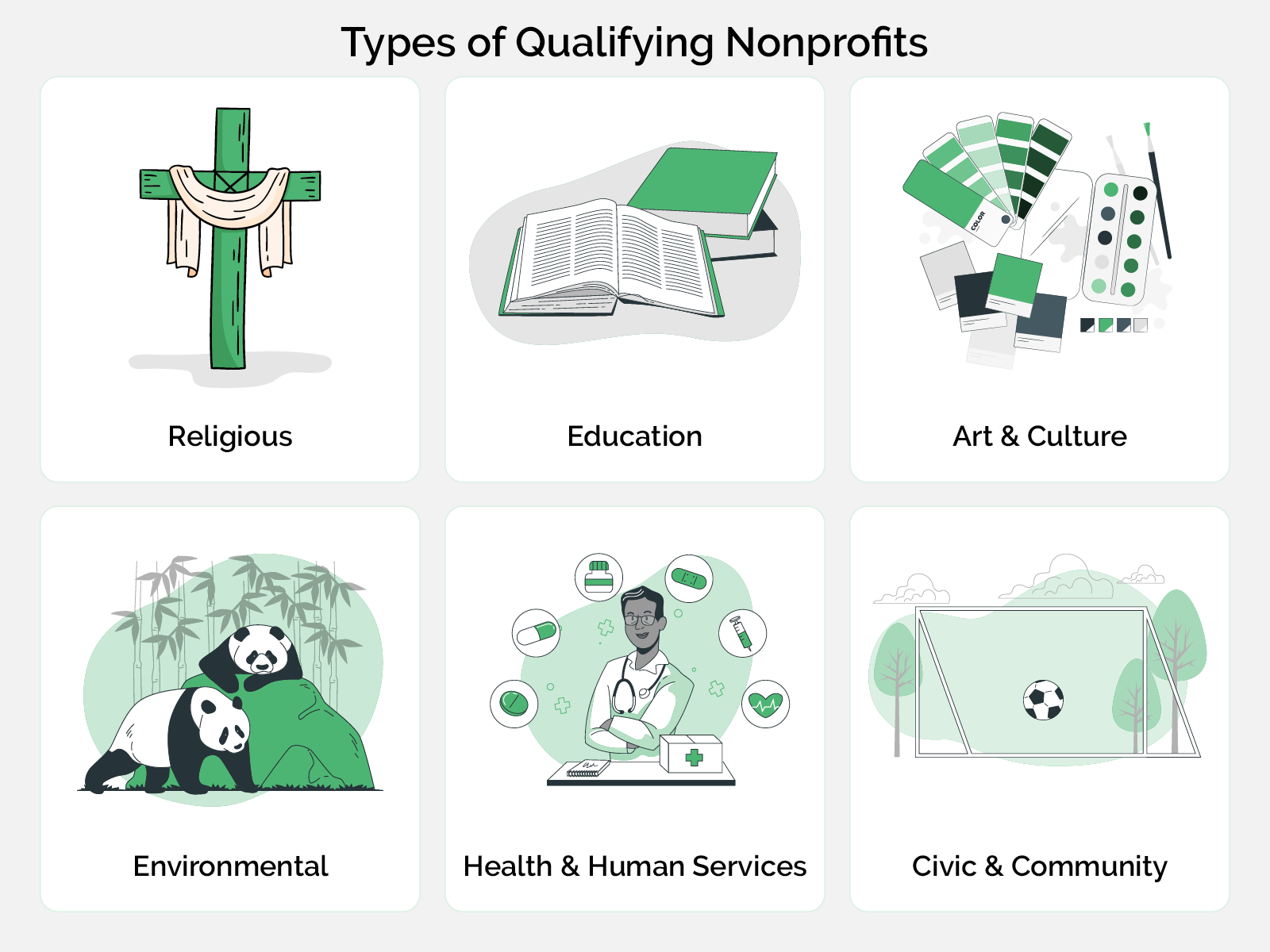
Matching gifts are one of the most popular types of corporate philanthropy for nonprofits, donors, and employers. Thousands of companies—of all shapes and sizes—offer corporate matching gift initiatives for their staff.
If you run a business that’s developing a matching gift program (or are still on the fence about the process), our simple, step-by-step guide will be your best friend.
If you’re a nonprofit fundraiser looking to better understand the other side of matching gifts, this can be an excellent resource as well.
We’ll dive into the ten essential steps involved in starting a matching gift program, which include the following:
-
- Set minimum and maximum donation amounts.
- Choose a matching gift ratio.
- Designate qualifying employee types.
- Determine qualifying nonprofit causes.
- Establish a submission request deadline.
- Identify what the submission process will look like.
- Inform employees about new program opportunities.
- Add your company to Double the Donation’s corporate database.
- Track data and make improvements.
Every successful corporate gift-matching program starts with a solid foundation. Each of these steps will get your team closer to the ultimate goal of effective philanthropy (not to mention improved corporate social responsibility, employee engagement, and more).
Ready to find out how it’s done? Let’s get started!
1. Set minimum and maximum donation amounts.
Most companies with matching gift programs choose both a minimum and a maximum employee donation size that they’re willing to match. In order for an employee gift to be considered match-eligible, the amount will need to fall within the specified range.
Consider these statistics from other matching gift companies to help guide your decision:
- 93% of companies have a minimum match requirement of less than or equal to $50.
- The average minimum match amount is $34.
- The average maximum match amount is $3,728.
- 80% of companies’ matching gift maximums fall between $500 and $10,000 annually per employee.

The lower your minimum and the higher your maximum, the more employees will be willing and able to participate. Just be sure to keep your total gift-matching budget in mind as you set your limits.
2. Choose a matching gift ratio.
A matching gift ratio is the rate at which a company matches its employees’ donations. For example, a 1:1 ratio would imply that the company makes the same size donation that the employee did. A ratio of less than 1:1 would result in the company making a smaller donation than the employee, while a ratio greater than 1:1 would mean a larger donation from the company than the employee.
Imagine an employee at your company makes a $100 donation to their favorite charity:
- 1:1 match rate would mean a $100 donation from your company, bringing the total value of the matched gift to $200.
- .5:1 match rate would mean a $50 donation from your company for a total value of $150.
- 2:1 match rate would mean a $200 donation from your company for a total value of $300.
- 3:1 match rate would mean a $300 donation from your company for a total value of $400.
The corporate giving research mentioned above reports that 91% of corporations match employee donations at a 1:1 ratio. The remaining companies either match at a lower rate, such as .5:1 (4%), or a higher rate, such as 2:1 or even 3:1 (5%).

Some companies will even choose to increase their match ratio at certain times in order to drive additional impact. This is a popular idea around giving days like Giving Tuesday and sometimes even throughout the rest of the year-end giving season. It’s also common in times of crisis fundraising—such as wars, natural disasters, and pandemics—when immediate support (and a lot of it) is needed.
3. Designate qualifying employee types.
Not every employee at your company has to qualify for a matching gift, either.
When setting your matching gift guidelines, you can choose one or more of the following types of employees to be match-eligible through your company:
- Full-time employees
- Part-time employees
- Retired employees
- Employee spouses
While current, full-time staff members are nearly always included in a company’s match-eligible recipients, many choose to match gifts made by current part-time and retired employees as well. Some corporations go even further to match donations made by employees’ spouses, but this is the least common category by far.
4. Determine qualifying nonprofit causes.
A significant appeal of matching gift programs is the idea that staff members are able to direct company contributions to their favorite charities. Still, companies offering the programs have the ability to determine to which types of organizations they will donate.
As you do so, keep in mind that the more open your match criteria for nonprofit recipients, the more employee participation you’ll likely see.
Most nonprofit causes fall into one of the following categories:
- K-12 schools
- Higher educational institutions
- Health and human services
- Arts and cultural organizations
- Civic and community organizations
- Environmental organizations
- Religious organizations

At this step in the process, your company has a choice of which types of organizations you agree to match to, typically by selecting one or more of the above classifications. For the greatest results, we strongly recommend companies matching gifts to any registered 501(c)(3) organization. This allows employees to give (and get their gifts matched!) to any organization they care about, thus driving engagement both with your matching program and your company as a whole.
In fact, one Realized Worth study indicates that 90% of employees choose the organizations they get involved with in terms of workplace giving based on cause areas they are interested in or passionate about, while 58% select a group based on a personal connection to the mission. Since your workforce likely offers a wide range of passions, interests, and connections, it makes sense to keep your match criteria open for maximal participation.
However, you may feel as if your company isn’t prepared to launch a comprehensive matching gift program. Instead, you might choose to begin matching gifts by organizing a custom match program with a dedicated nonprofit partner. Rather than doubling the donations your staff make to any nonprofits, your team would select a particular organization to support in your program.
5. Establish a submission request deadline.
Next, you’ll want to set the deadline by which employees must submit their donation requests in order to qualify for a company match. Most corporations structure their deadlines in one of these ways:
- A number of months following the donation being made (often 6 or 12)
- By the end of the calendar year in which the donation was made
- By the end of the calendar year with a grace period (e.g., January 31st of the following year)
- By the end of the company’s fiscal year
All in all, it tends to be most beneficial to all parties involved to enact a generous deadline of 12 months post-donation or a few months into the year following the one in which the initial donation is made. The longer the submission window, the more employee donors are able to get involved.
Regardless of the deadline you choose to enact, this is a key component of your matching gift program that you’ll want to communicate to your employees. If staff members are unaware of the deadlines set, they may end up missing the dates—causing their initially-eligible donations to go unmatched.
6. Identify what the submission process will look like.
The process employees follow to request a matching gift from your company is one of the most important aspects of your program. In fact, this step is the program. The simpler your matching gift request process, the more employees will participate.
There are a few main ways that companies manage their matching gift submissions. While online forms and third-party CSR platforms are becoming the norm, some companies still accept paper documents and PDF forms.
You’ll also need to determine how your company goes about approving matches. While some corporations end up contacting the nonprofits directly to verify that the initial donation was made, others simply request a copy of the donor’s gift receipt. We recommend the latter strategy, as it requires the least amount of time and effort from each party.
9. Inform employees about new program opportunities.
78% of match-eligible donors have no idea whether their employer offers a matching gift program. As a result, millions of individuals are not seeking the donation matches they are entitled to. At this step in the program development process, the goal is to ensure your own employees do not fall into this group.
After all, employees who are unaware of available matching opportunities are not participating in the programs, which, therefore, are not driving value for the company.
Take the time to educate your employees about your new matching gift program (along with other workplace giving offerings you have). We recommend sending company-wide communications with details on the programs and how to get involved at the start of your program and on a regular basis throughout the year. At the same time, make sure to provide matching gift information in your office policy handbook and onboarding materials as well.
You’ve already invested time and energy into developing a matching gift program. You want your employees to take part!
9. Add your company to Double the Donation’s corporate database.
One of the simplest ways to ensure your employees are informed about your matching program is by adding it to the most comprehensive database of corporate giving information: Double the Donation’s. When you do so, team members giving to organizations that use Double the Donation’s tools (which includes over 75% of the largest nonprofit causes) will be provided with immediate access to program guidelines as well as your online submission process.
To get your company added, all you need to do is fill out a brief form on the Double the Donation website, providing basic information about your company and its matching gift program.
It looks like this, and it’s quick and easy to complete:

Plus, you’ll have the opportunity to indicate that you’d like to accept Double the Donation’s standard match form.
10. Track data and make improvements.
Collecting, storing, and analyzing data on your company’s matching gift efforts can play a critical role in its overall success. We suggest measuring metrics such as:
- Number of matching gifts requested
- Total matching gift revenue requested
- Number of matching gifts disbursed
- Total matching gift revenue disbursed
- Average matching gift size
- Matching gift program participation level
Then, you can pull key insights from your program data to locate areas with the greatest room for improvement and make necessary changes to your strategy.
For example, suppose you notice that a large percentage of your workforce capping out their matching gift maximums each year. In that case, you might consider increasing your matching threshold to match more significant gifts. If your matching gift program sees significantly low participation levels, on the other hand, you may decide to better promote and incentivize the opportunity to employees.
Your matching gift program might not start off as the best in the industry. But when you collect data, analyze trends, and adjust your efforts accordingly, you’ll be sure to have a corporate giving program that benefits your company, its employees, and a wide range of nonprofit organizations.
Next Steps
If you’re thinking of launching a corporate matching gift program for the first time, the process can seem a bit intimidating. By working through each step highlighted in this guide, you can begin matching employee donations in no time.
Start drafting your matching gift program guidelines and determine the procedure for employees looking to participate. Good luck!
Read now: How to Offer the Ultimate Employee Giving Experience
